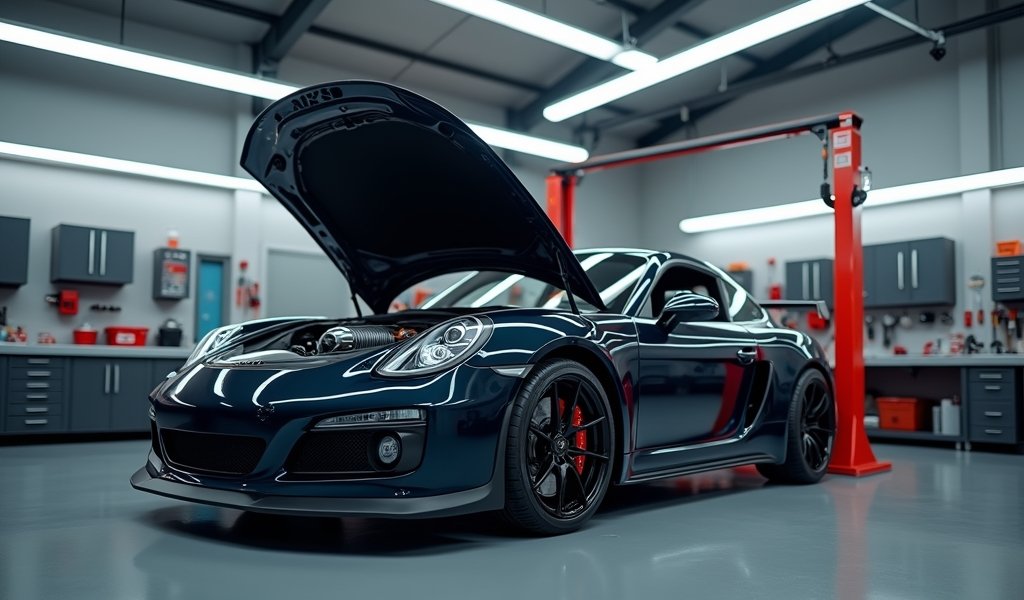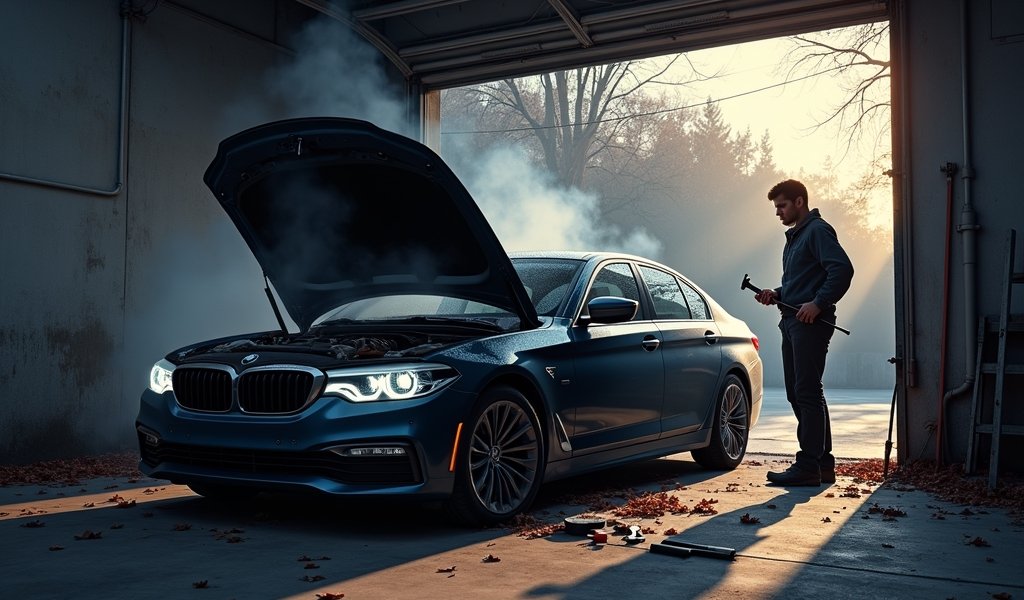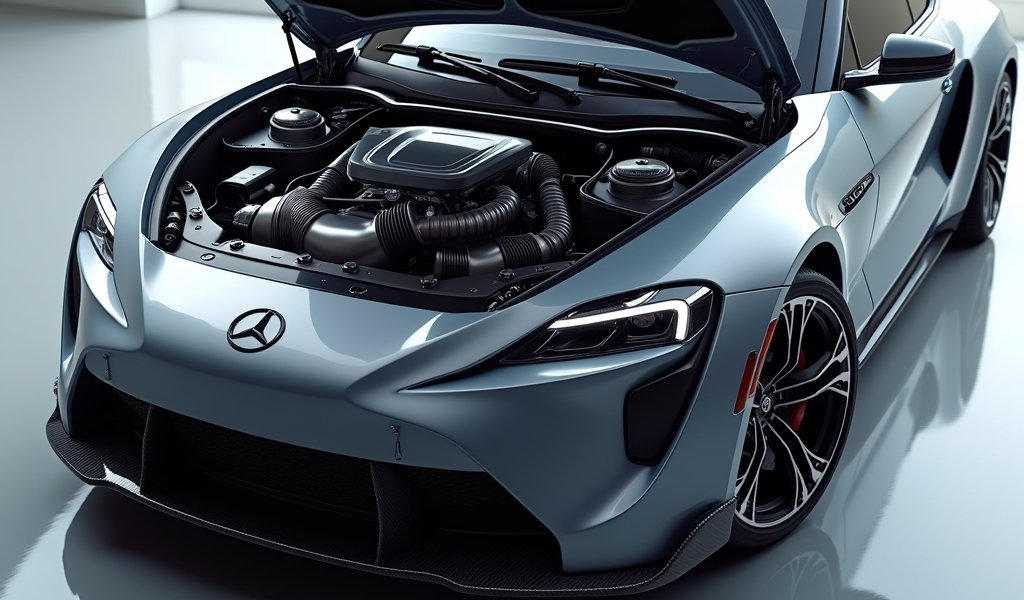Overview
This article explains how cold air intakes improve vehicle performance by drawing cooler, oxygen-rich air into engines, potentially adding 5-15 horsepower, enhancing fuel economy, and producing better engine sound. It recommends top products for different needs (K&N for overall value, Spectre for budget options, aFe Power for premium performance, and AEM for sport compacts), while providing installation guidance, maintenance tips, and addressing legal considerations including emissions compliance.
Table of Contents
- Understanding Cold Air Intakes: What They Do and Why They Matter
- Benefits of Upgrading Your Cold Air Intake
- Top 4 Cold Air Intakes Worth Your Money
- Installation Guide: DIY or Professional Help?
- Maintenance Tips for Long-Lasting Performance
- Compatibility and Legal Considerations
- Conclusion: Breathing New Life Into Your Engine
- Frequently Asked Questions
Understanding Cold Air Intakes: What They Do and Why They Matter
Ever noticed how your car seems to run better on a crisp, cool morning? There’s science behind that feeling. Your engine craves oxygen – the colder and denser, the better. Factory air intake systems are typically designed for noise reduction and manufacturing efficiency rather than optimal performance. They often pull warmer air from within the cramped engine bay, limiting your vehicle’s potential.
Cold air intakes solve this problem by relocating the air filter outside the engine bay, drawing in cooler, oxygen-rich air from outside. This isn’t just gearhead theory – it’s combustion chemistry. Cooler air contains more oxygen molecules per volume than warm air, creating a more efficient burn when mixed with fuel. The result? More power, better response, and that satisfying intake growl that makes driving more engaging.
Think of it like the difference between breathing through a coffee straw versus a smoothie straw. Your engine works less while getting more air, allowing for noticeable improvements in performance without breaking the bank on extensive modifications. As someone who’s installed dozens of these systems in my shop, I can tell you firsthand – it’s one of the smartest first upgrades you can make to your vehicle.
Benefits of Upgrading Your Cold Air Intake
Let’s get practical about what you’ll actually notice after installing a quality cold air intake. First and foremost is the power gain. Depending on your vehicle, you can expect anywhere from 5-15 horsepower increases, with some applications seeing even more impressive numbers. This translates to better acceleration and passing power – something you’ll feel every time you merge onto the highway.
Fuel economy improvements typically hover around 1-2 MPG. While that might not sound revolutionary, it adds up over thousands of miles and helps offset the initial investment. Many of my customers report their intake systems paying for themselves within a year through fuel savings alone, especially on longer commutes.
The sound enhancement is something spec sheets don’t capture well. A good cold air intake transforms your engine note from a muted hum to a authoritative growl during acceleration. It’s subtle enough not to be annoying on daily drives but provides satisfying feedback when you put your foot down. Many drivers find this more engaging driving experience to be worth the upgrade even before calculating performance benefits.
Perhaps most importantly, improved engine efficiency reduces strain on your motor. Your engine doesn’t have to work as hard to produce the same power, potentially extending its service life. This is especially valuable for vehicles frequently pushed hard or used for towing. According to research from the Society of Automotive Engineers, optimizing airflow can significantly reduce engine operating temperatures under load.

Top 4 Cold Air Intakes Worth Your Money
1. K&N Cold Air Intake Kit 63-3082: Best Overall Option
After testing dozens of systems in my garage, the K&N 63-3082 consistently delivers the best balance of quality, performance, and value. Designed for Chevrolet and GMC trucks with 5.3L/6.2L engines (2014-2018), this intake delivers an impressive 24 horsepower gain in dyno testing. The aircraft-grade aluminum tubing and distinctive red oiled filter not only look professional under the hood but provide exceptional durability.
What separates K&N from competitors is their million-mile limited warranty – yes, you read that right. They stand behind their products with confidence few manufacturers can match. Installation typically takes 90 minutes even for DIY mechanics, and the system is 50-state legal with CARB exemption. At around $339.99, it represents a significant investment, but the performance improvements and build quality justify the price point.
2. Spectre Performance Air Intake Kit SPE-9900: Budget-Friendly Champion
For drivers wanting significant improvements without breaking the bank, the Spectre SPE-9900 delivers impressive value at $149.99. Its universal design with multiple adapters fits a wide range of vehicles, though you sacrifice some of the vehicle-specific optimization of pricier options. The polished aluminum tubing looks sharp and helps maintain lower air temperatures than plastic alternatives.
The non-oiled synthetic filter means easier maintenance – no messy re-oiling process required. While the universal fit requires more adaptation during installation, the price-to-performance ratio is excellent. Most applications see 8-12 horsepower gains, and the limited lifetime warranty provides peace of mind for budget-conscious enthusiasts.
3. aFe Power Momentum GT 51-12662: Premium Performance Pick
For F-150 owners with the 5.0L V8 (2018-2022) seeking maximum performance, the aFe Power Momentum GT justifies its $419.99 price tag through sophisticated engineering and exceptional build quality. The one-piece rotomolded design eliminates potential leak points found in systems with multiple connections, while computational fluid dynamics testing ensures optimal airflow with minimal turbulence.
The choice between Pro 5R oiled or Pro DRY S oil-free filters allows you to select your preferred maintenance approach. Dyno-verified gains of 19 horsepower and 18 lb-ft of torque are among the highest in its class, making this the go-to option for serious truck enthusiasts who demand the absolute best performance. I’ve installed several of these systems and the quality difference is immediately apparent compared to mid-range options.
4. AEM 21-478WR Cold Air Intake System: Best for Sport Compacts
Honda Civic owners with the 1.5L turbocharged engine (2016-2022) have a clear champion in the AEM 21-478WR. Priced at $299.95, this system is specifically engineered to complement the factory turbocharger, enhancing throttle response and providing up to 10 additional horsepower. The DRYFLOW synthetic washable filter requires no oiling, simplifying maintenance.
What makes this system stand out is its sophisticated heat shield design, which effectively isolates the filter from engine heat – crucial for turbocharged applications where intake temperatures significantly impact performance. The mandrel-bent aluminum tubing ensures smooth airflow, and the system is CARB exempt for worry-free use in all 50 states. For Civic owners looking to enhance their turbocharged performance, this purpose-built system delivers consistent results.
Installation Guide: DIY or Professional Help?
Installing a cold air intake is one of the most approachable DIY modifications for automotive enthusiasts. Most systems can be installed in your driveway with basic hand tools in 1-2 hours. Here’s a straightforward process that works for most vehicles:
- Gather tools: Socket set, screwdrivers, pliers, and clean rags
- Disconnect the negative battery terminal (safety first!)
- Remove factory air box components and intake tubing
- Install the new heat shield in the appropriate location
- Position the new filter and connect intake tubing
- Reconnect any sensors and ensure all clamps are tight
- Double-check all connections before reconnecting the battery
- Start the engine and check for proper operation
The most common challenges involve sensor reconnection and ensuring proper sealing. Modern vehicles have multiple sensors in the intake tract that must be transferred to the new system. Take photos before disassembly to reference during installation, and always follow the manufacturer’s specific instructions for your vehicle model.
If you’re not comfortable with this level of work or have a particularly complex engine bay, professional installation typically costs $75-150 at most performance shops. This might be worthwhile if you’re concerned about warranty implications or have limited mechanical experience. As a professional, I’ve seen DIY installations go perfectly smooth and others that required significant troubleshooting – your comfort level should guide this decision.
Professional tuning costs may be worth considering after installation to fully optimize your system, though most vehicles adapt well without additional tuning. The modern engine computer will adjust to the improved airflow within a few driving cycles.
Maintenance Tips for Long-Lasting Performance

Proper maintenance ensures your cold air intake continues delivering peak performance for years. The primary maintenance task involves filter cleaning, with schedules varying by filter type:
- Oiled filters: Clean and re-oil every 30,000-50,000 miles under normal conditions
- Dry filters: Clean every 15,000-30,000 miles
- Increase frequency if you drive in dusty environments or off-road
For oiled filters, the cleaning process requires specific products from the manufacturer. First, carefully remove the filter without disturbing the intake housing. Apply the designated cleaner and rinse thoroughly, allowing the filter to dry completely – usually overnight. Then apply the filter oil precisely according to the manufacturer’s instructions, being careful not to over-oil which can cause sensor issues.
Dry filters simplify the process considerably. Remove the filter, tap out loose debris, and either use the manufacturer’s cleaner or mild soapy water to clean. Rinse thoroughly and ensure the filter is completely dry before reinstallation.
Watch for warning signs of problems: check engine lights (particularly related to air/fuel mixture), decreased performance, unusual engine sounds, or visible dirt accumulation. In my experience, proper maintenance prevents 95% of potential issues. For optimal performance gains, consider combining your cold air intake with complementary modifications like performance exhaust systems or tuning.
One often overlooked aspect is checking all clamps and connections every few oil changes. Engine vibration can gradually loosen these components, creating potential air leaks that impact performance. A quick visual inspection and tightening of any loose clamps takes just minutes and prevents more significant issues.
Compatibility and Legal Considerations
Before purchasing any cold air intake, confirm compatibility with your specific vehicle make, model, year, and engine. Many manufacturers offer online lookup tools that ensure precise fitment. Universal systems require more adaptation and rarely deliver the same performance as vehicle-specific designs.
Emissions legality varies by state, with California having the strictest requirements through the California Air Resources Board (CARB). For worry-free compliance nationwide, look for intakes labeled “CARB exempt” or “50-state legal.” These have been tested and certified to meet emissions standards in all jurisdictions. According to the California Air Resources Board, non-compliant parts can result in failed emissions tests and potential fines.
Warranty considerations often concern new vehicle owners. Under the Magnuson-Moss Warranty Act, manufacturers cannot void your entire vehicle warranty simply for installing aftermarket parts. However, if they can prove the aftermarket part caused a specific failure, that particular repair might not be covered. Choosing high-quality, CARB-compliant intakes from reputable manufacturers minimizes this risk.
Some manufacturers offer companion products designed to work with specific intakes. These might include airflow sensors, heat shields, or pre-filters for extreme conditions. While not always necessary, these complementary products can maximize performance in specific applications. I generally recommend starting with the intake alone and adding these accessories only if needed for your driving conditions.
Conclusion: Breathing New Life Into Your Engine
A quality cold air intake represents one of the best performance-per-dollar modifications you can make to your vehicle. The right system delivers noticeable improvements in power, throttle response, and sound while potentially improving fuel economy and engine longevity. After years in the shop and countless installations, I can confidently say it’s where I recommend most performance enthusiasts start their modification journey.
For most drivers seeking the best overall balance of quality, performance and value, the K&N 63-3082 remains my top recommendation. Budget-conscious enthusiasts will find the Spectre SPE-9900 delivers impressive results without breaking the bank. Those demanding absolute premium performance should look to the aFe Power Momentum GT, while Honda Civic owners have a purpose-built champion in the AEM 21-478WR.
Remember that installation is approachable for most DIYers with basic tools, though professional help remains an option for those less comfortable with mechanical work. Whichever route you choose, proper maintenance ensures your intake continues performing optimally for years to come.
Ready to help your engine breathe better? At Knows Your Car, we stock all these top-rated cold air intakes and can help you find the perfect match for your specific vehicle. Visit us at knowsyourcar.com to explore our full selection of performance parts and get expert advice on choosing the right cold air intake for your driving needs.
Frequently Asked Questions
How much horsepower will a cold air intake add to my car?
Most vehicles see 5-15 horsepower gains, with some applications reaching 20+ horsepower. Results vary based on your specific engine and the quality of the intake system installed.
Will installing a cold air intake void my car warranty?
Under the Magnuson-Moss Warranty Act, manufacturers cannot void your entire warranty just for installing aftermarket parts. However, if they can prove the intake caused a specific problem, that particular repair might not be covered.
How often should I clean my cold air intake filter?
Oiled filters typically require cleaning every 30,000-50,000 miles, while dry filters need attention every 15,000-30,000 miles. Increase frequency if you drive in dusty environments or off-road conditions.
Are cold air intakes legal in all states?
Not all intakes meet emissions requirements in every state. Look for “CARB exempt” or “50-state legal” labels to ensure nationwide compliance, particularly for California vehicles.
Do I need a tune after installing a cold air intake?
Modern vehicles will adapt to the improved airflow without requiring additional tuning. For maximum performance gains, especially with other modifications, a professional tune can optimize your vehicle’s response to the new intake.

